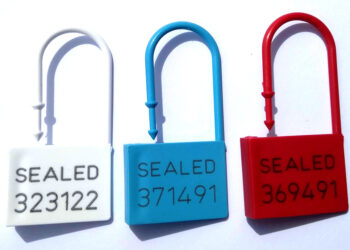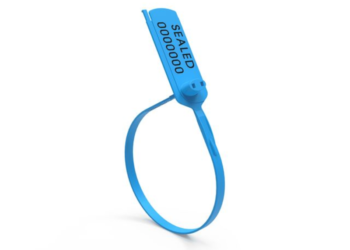In today’s globalized economy, the movement of goods across borders has become an integral part of business operations. However, with this increased trade activity comes a heightened risk of tampering, theft, and unauthorized access to cargo during transportation. To address these concerns and ensure the safety and security of goods in transit, the International Organization for Standardization (ISO) introduced the ISO 17712:2013 standard. This standard lays out stringent guidelines for the testing and certification of mechanical seals used on containers, safeguarding the integrity of shipments and bolstering shipping security.
The ISO 17712:2013 standard specifies requirements for high-security seals that are used to secure containers in the global supply chain. These seals serve as a critical line of defense, deterring and detecting any tampering or unauthorized entry. Manufacturers and suppliers of these seals must adhere to ISO 17712:2013 standards to ensure their effectiveness in real-world scenarios. However, compliance with the standard isn’t just about meeting regulations; it’s about enhancing the security of shipments and fostering trust among trading partners.
One of the primary elements of ISO 17712:2013 is the rigorous testing that seals must undergo to meet its criteria. These tests evaluate the seals’ strength, tamper resistance, and durability, ensuring they can withstand a range of challenges they might encounter during transit.
Some of the key testing procedures include:
- Strength and Endurance Testing: Seals are subjected to forces that simulate the stresses they might experience during handling and transportation. This includes tests for tensile strength, impact resistance, and the ability to endure harsh environmental conditions.
- Tamper Evidence: Seals must demonstrate their effectiveness in showing clear, irreversible signs of tampering. This involves testing their resistance to manipulation techniques such as picking, cutting, and freezing.
- Environmental Testing: Seals must prove their durability in various environmental conditions, including extreme temperatures, exposure to saltwater, and UV radiation. This ensures they remain functional and reliable regardless of the circumstances.
- Compatibility: The ISO 17712:2013 standard also emphasizes compatibility with container doors and other shipping equipment, guaranteeing a seamless integration of the seal into the shipping process.
By undergoing these rigorous tests, high-security seals gain the ISO 17712:2013 certification, signifying their ability to meet the highest standards of shipping security. For businesses involved in international trade, partnering with testing services that specialize in ISO 17712:2013 compliance is paramount. These specialized services play a crucial role in ensuring that the seals used in shipping operations are reliable, effective, and compliant with global security standards.
The benefits of using ISO 17712:2013 certified seals and testing services extend beyond security alone. They contribute to the overall efficiency of supply chain management by reducing the risk of cargo theft, tampering, and delays due to security-related incidents. Additionally, businesses that prioritize shipping security in accordance with internationally recognized standards are more likely to foster trust and positive relationships with partners, regulators, and customers alike.
Conclusion:
the ISO 17712:2013 standard and the associated testing services play a pivotal role in elevating shipping security to new heights. By subjecting high-security seals to stringent testing and certification processes, this standard provides businesses with the confidence that their cargo will reach its destination intact and secure. Moreover, compliance with ISO 17712:2013 demonstrates a commitment to best practices in supply chain security, fostering trust and integrity in an increasingly interconnected global marketplace.











